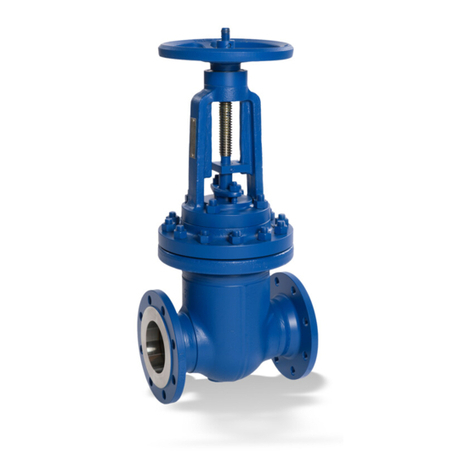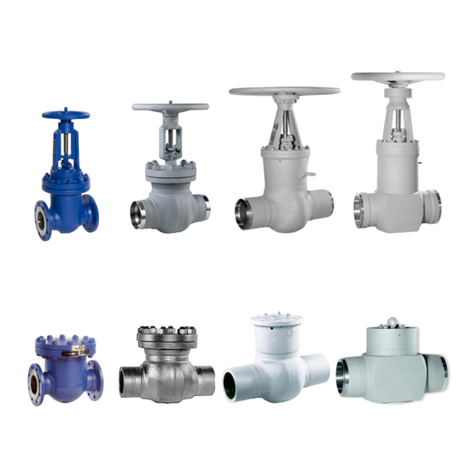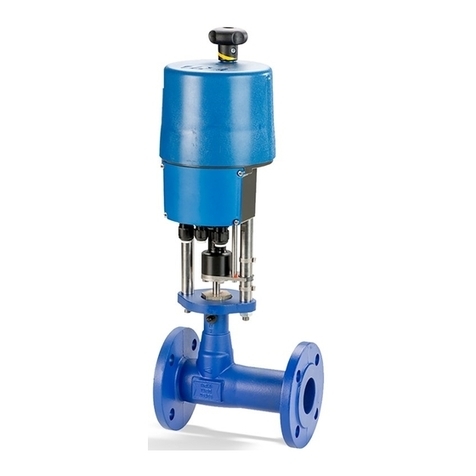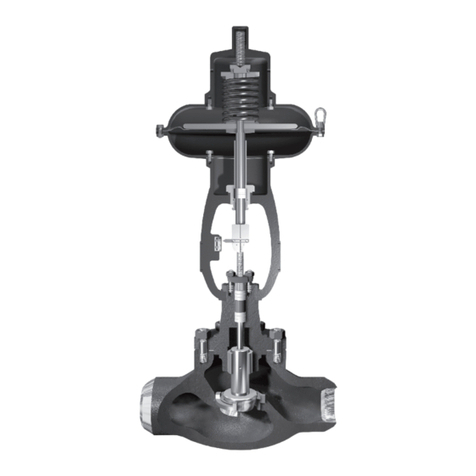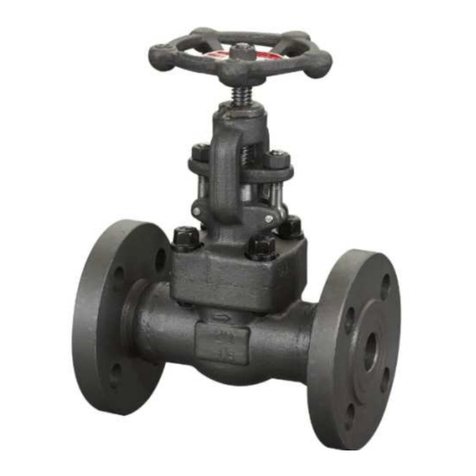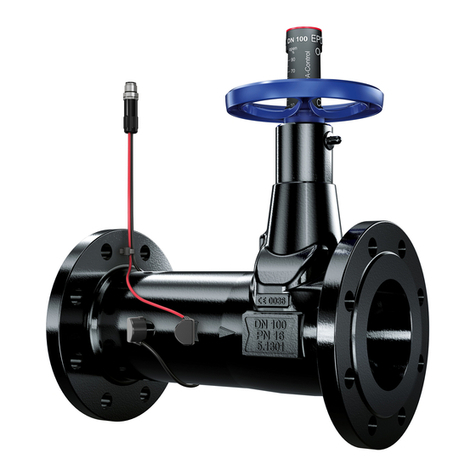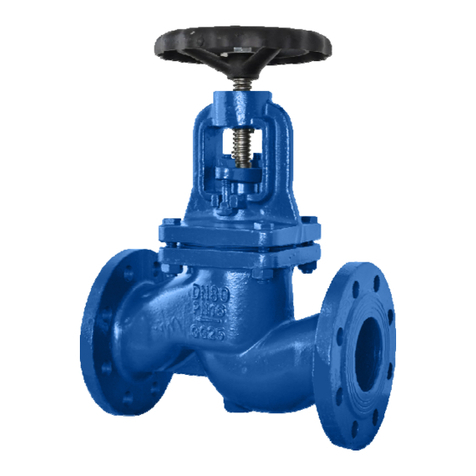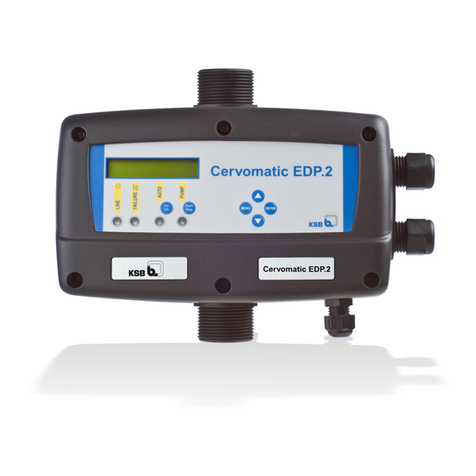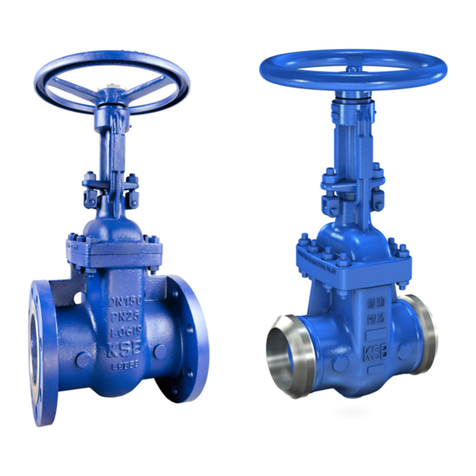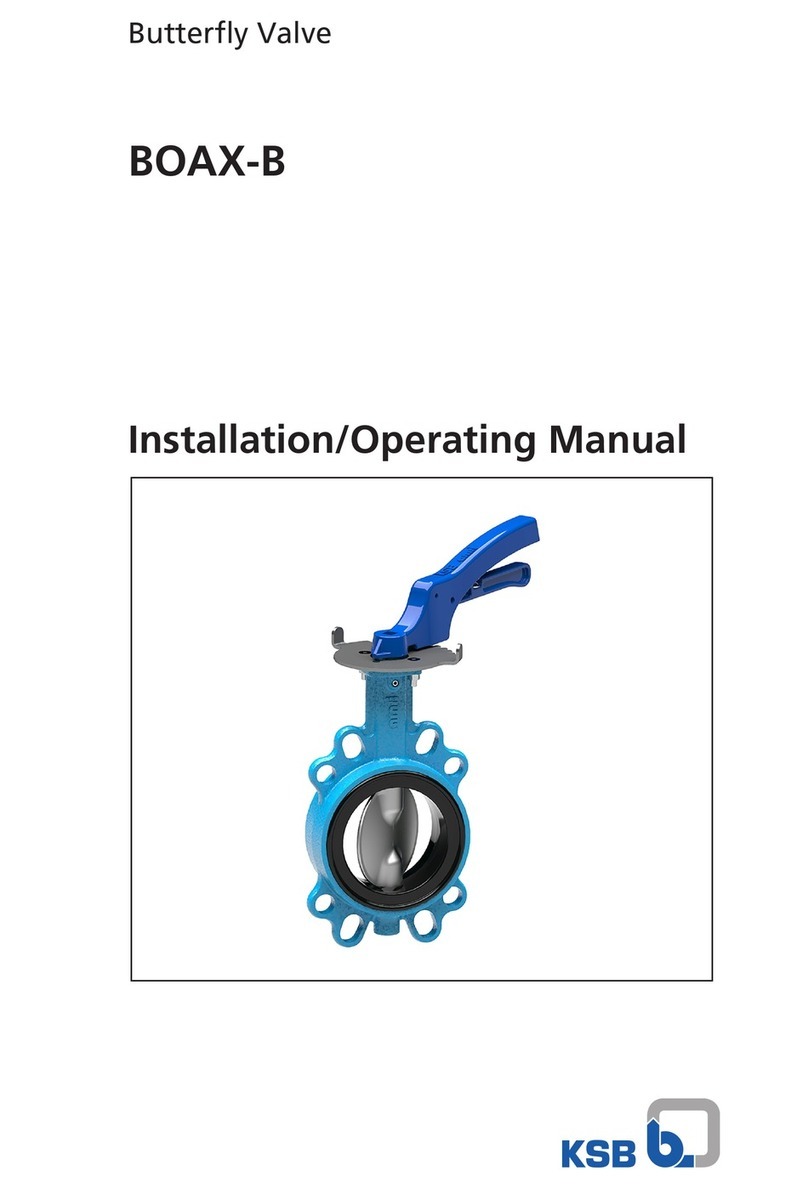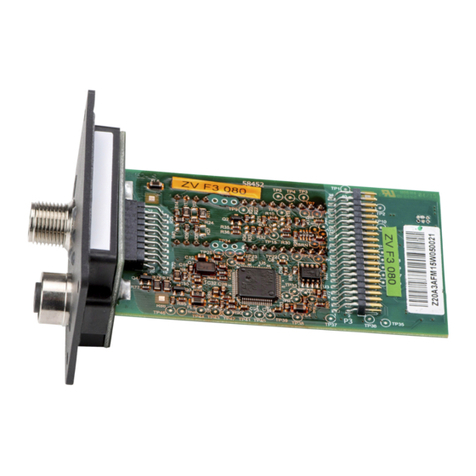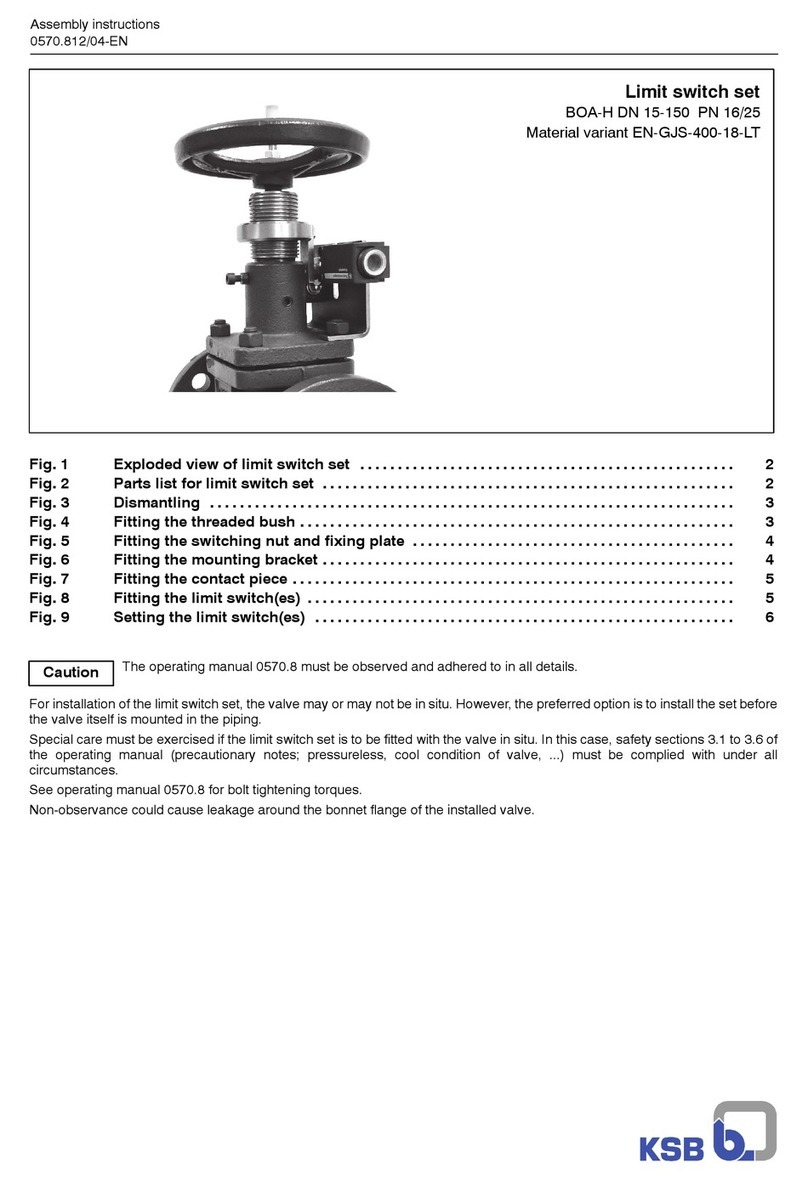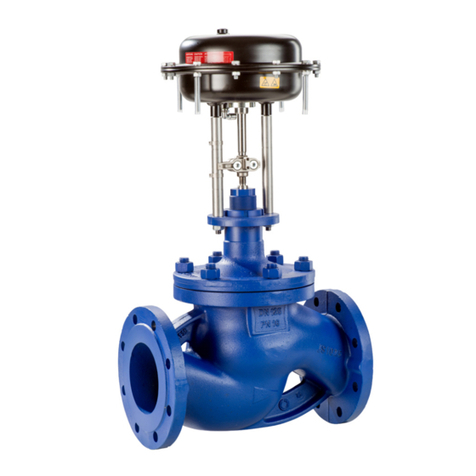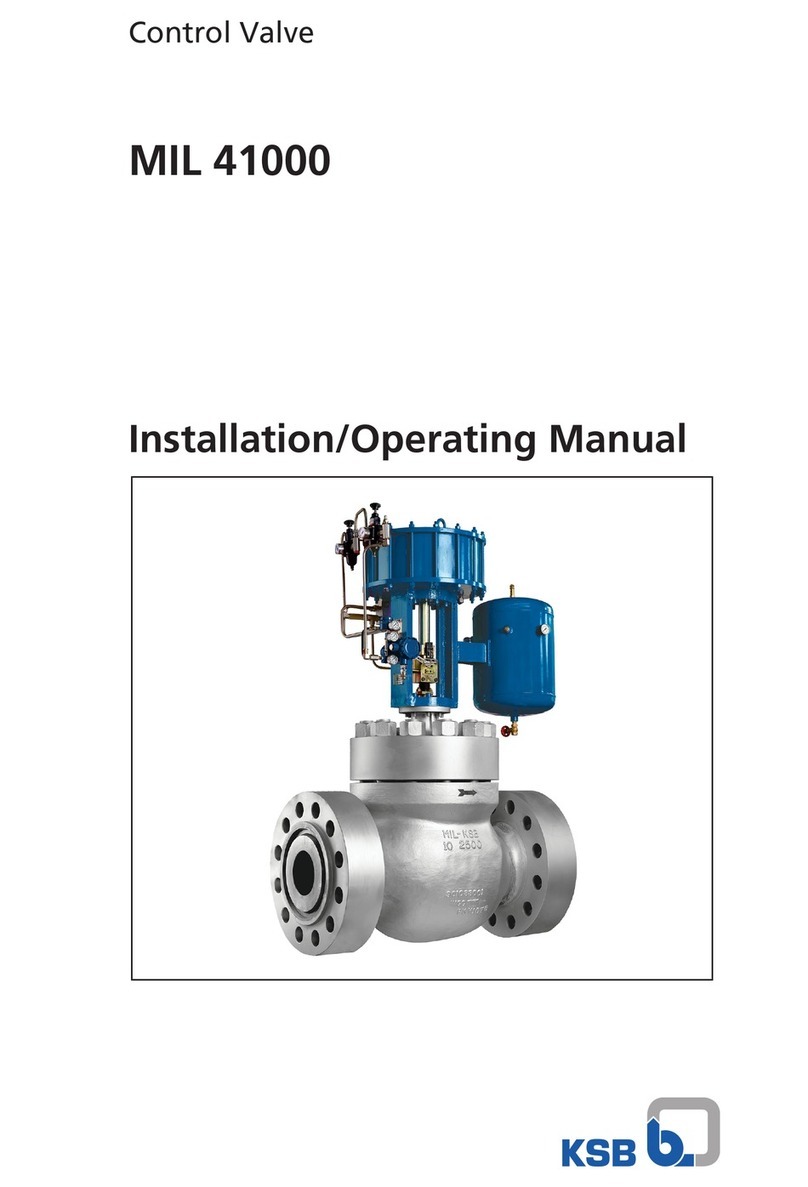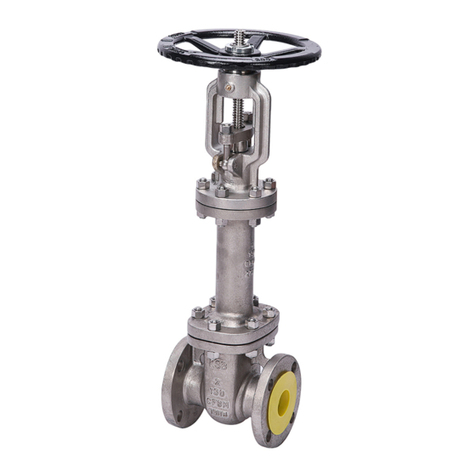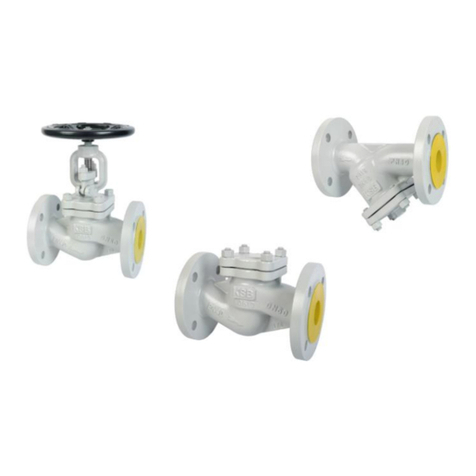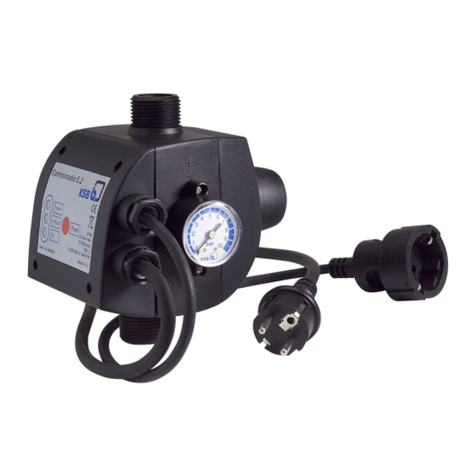
stem adapter and link line up. Insert the
second pin (27), link (29) and snap rings
(32). Fit snap rings (31) and tight nut (60)
of the stem clamp (58).
6. Remove air pressure from diaphragm and
ensure that the marking on actuator stem
returns to its position.
Caution : If marking comes in spring
adjustor (49) : Start again step 4 and
screw stem adapter (22) more in stem
clamp (58).
If marking not in correct position : Start
again step 4 and screw stem adapter (22)
less in stem clamp (58).
Note : When marking in position it
ensures the entire spring force is used
to tighten plug onto its seat.
7. With the help of comparator, check the
plug performs its complete travel
starting from the closed position,
when the air pressure passes from the
minimum value to the maximum value
which is given on the serial plate (15).
Adjust travel indicator scale such that
the travel indicator (61) indicates
“OPEN”. Retighten packing box nuts
(9). Install the valve in the line,
connect air pressure tubing and put in
service.
Valve fitted with coupling device type 2,
(Figure 6)
1. Screw stem adapter (22) into clamp
(58) and fit actuator on its bracket
using drive nut (5) or screws (34) and
ensure to fit lower part of stem adapter
(22) into vertical slot at lever end (33).
2. Admit air pressure to actuator until the
stem extends by 4 mm. Mark position
of actuator stem in relation to spring
adjuster (49).
3. Seat the plug firmly by lifting the lever
toward the stem adapter (22). The hole
of the stem adapter should line up with
the horizontal slot in the lever. If not,
remove clevis pin (26), move the lever
toward the back of the valve and
adjust the position of the stem adapter.
4. After achieving alignment, move again
the lever toward the back of the valve.
Then screw stem adapter (22) by 6 to
12 mm more into clamp.
5. Apply air pressure to the diaphragm to
move the stem adapter down. Insert
pin (27) into the hole of the stem
adapter and slide lever onto the pin.
Replace clevis pin (26) and snap rings
(31) then screw stem clamp (58).
6. Remove air pressure from diaphragm
and ensure that the marking on
actuator stem returns to its position.
Caution : If marking comes in spring
adjustor (49) : Start again step 4 and
screw stem adapter (22) more in stem
clamp (58).
If marking not in correct position : Start
again step 4 and screw stem adapter (22)
less in stem clamp (58).
Note: When marking in position, it
ensures the entire spring force is used
to tighten plug onto its seat.
7. With the help of a comparator, check the
plug performs its complete travel starting
from the closed position, when the air
pressure passes from the minimum value
to the maximum value which is given on
the serial plate (15). Adjust travel
indicator scale such that the travel
indicator (61) indicates “OPEN”.
Retighten packing box nuts (9). Install the
valve in the line, connect air pressure
tubing and put in service.
6.4.2 No 38 Reverse Actuator (air to close)
Mounting and adjustment of the No 38 reverse
actuator is done in much the same way as with
the No 37 actuator.
Connection of stem adapter and lever is made
with the valve closed. Air pressure is applied to
the actuator to the maximum value of the spring
range and the connection is
7
